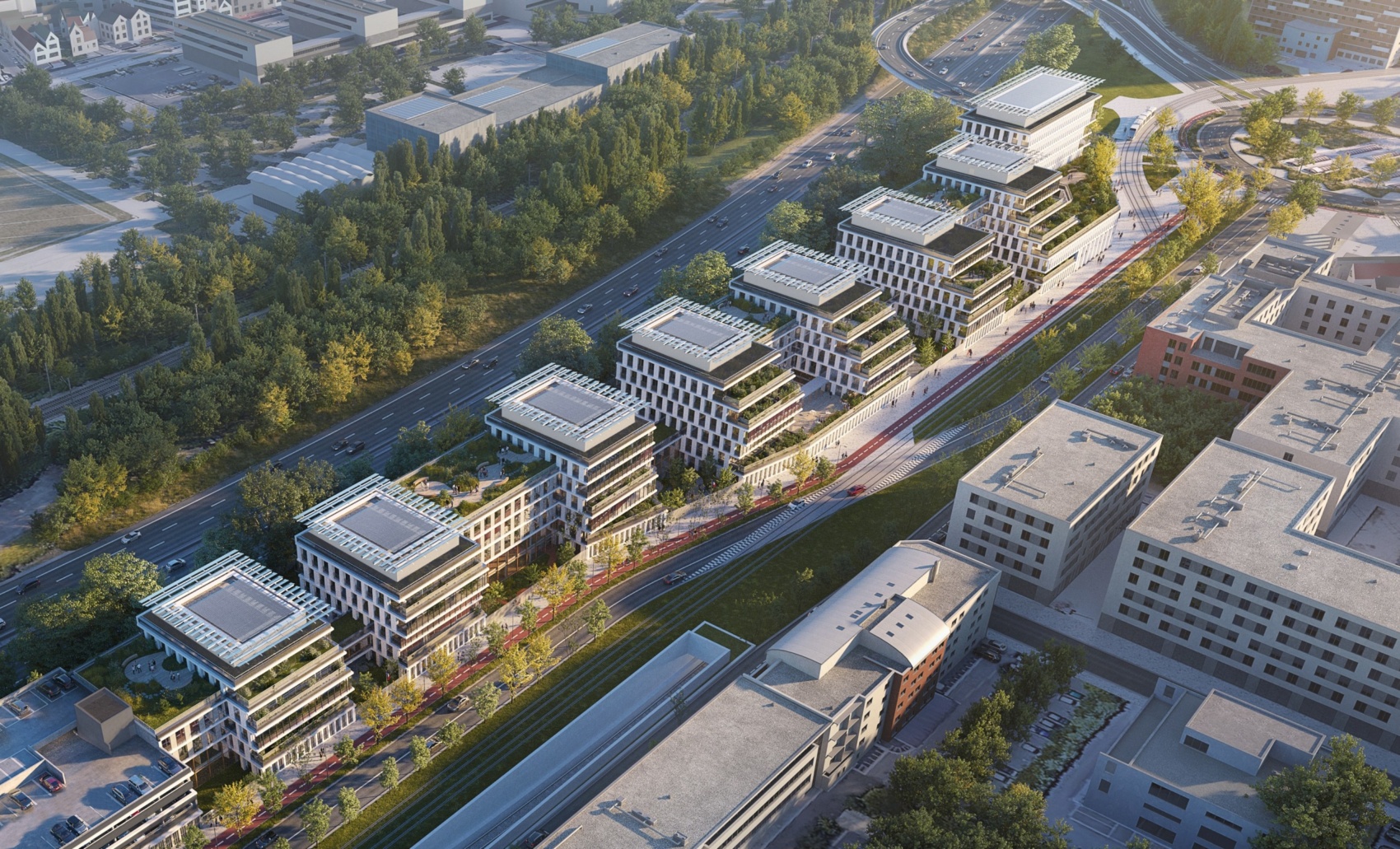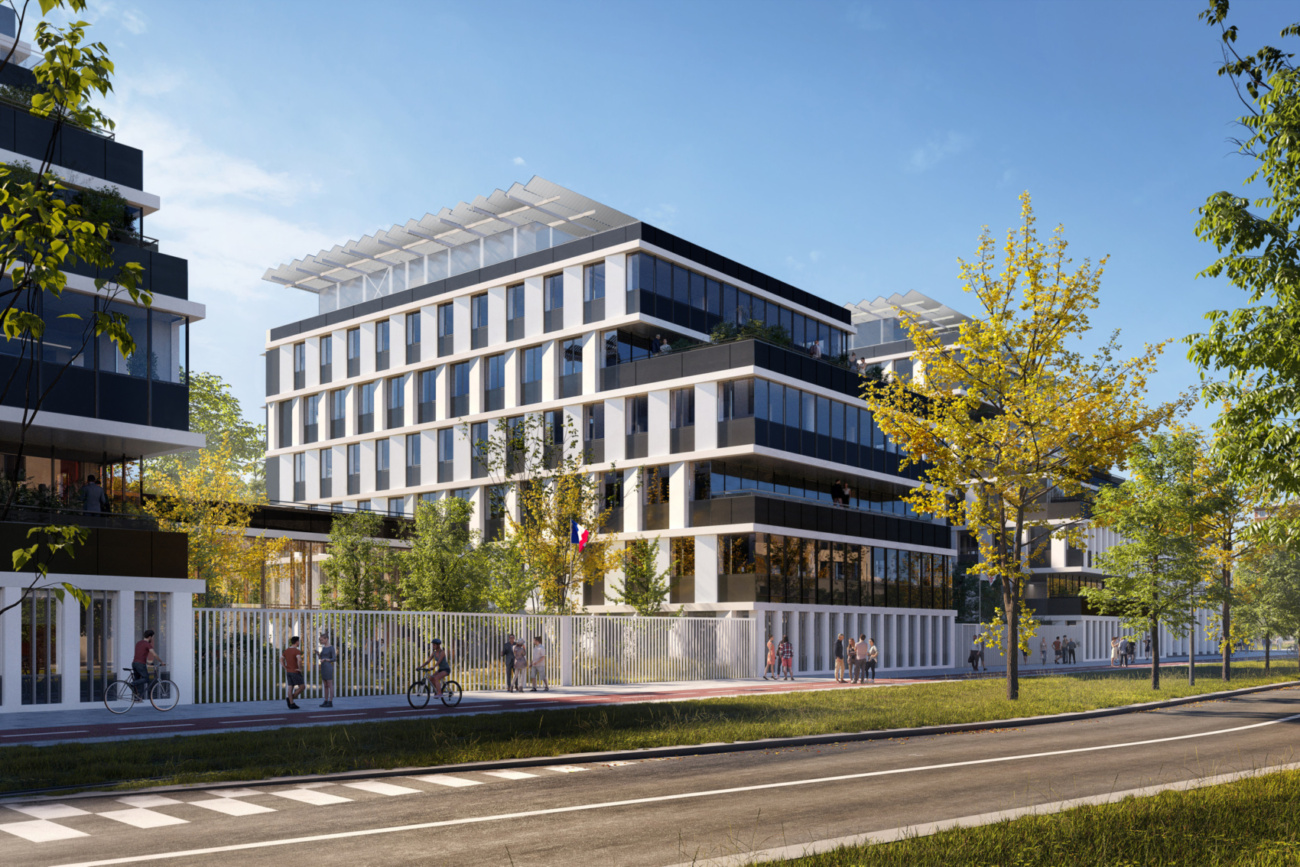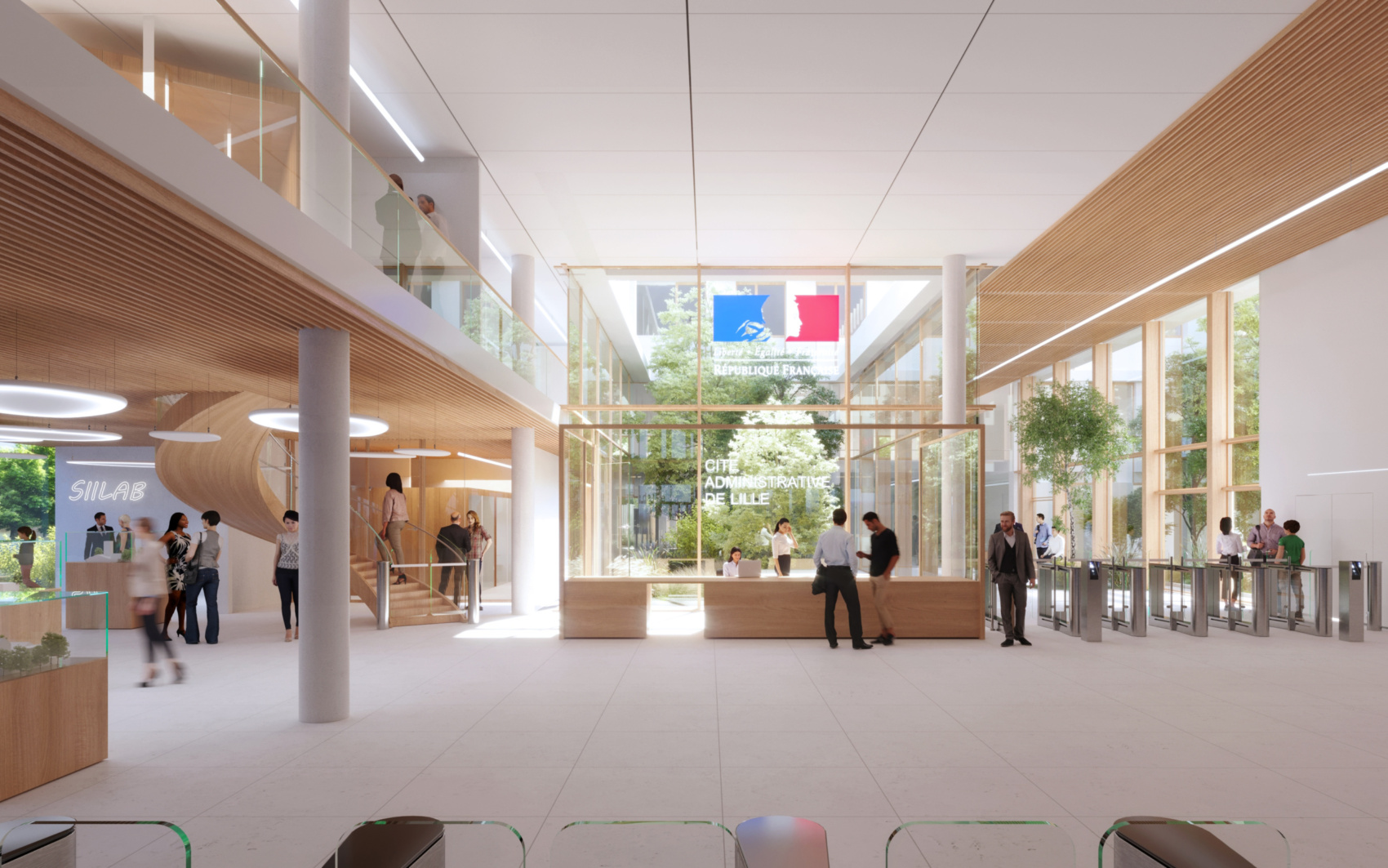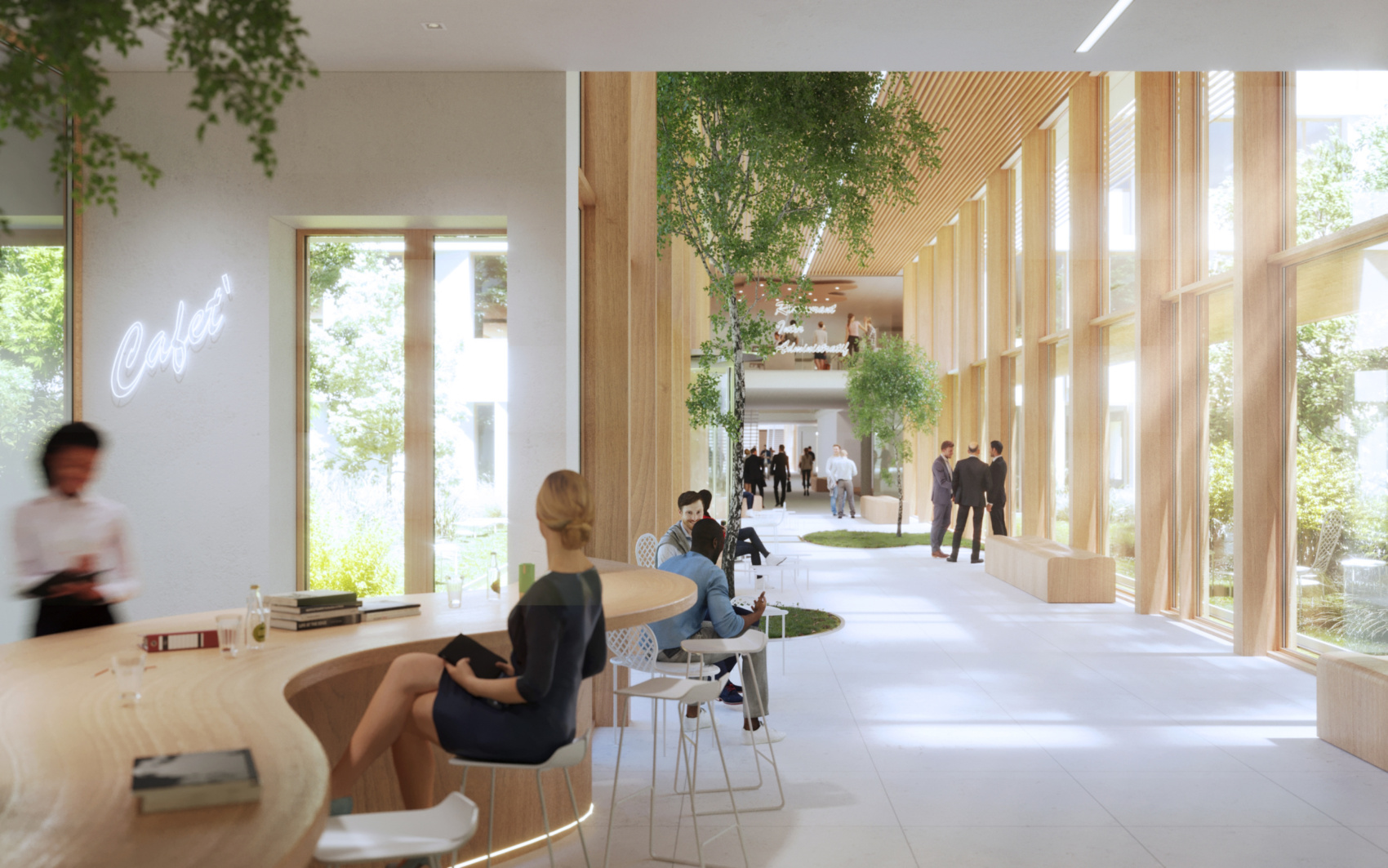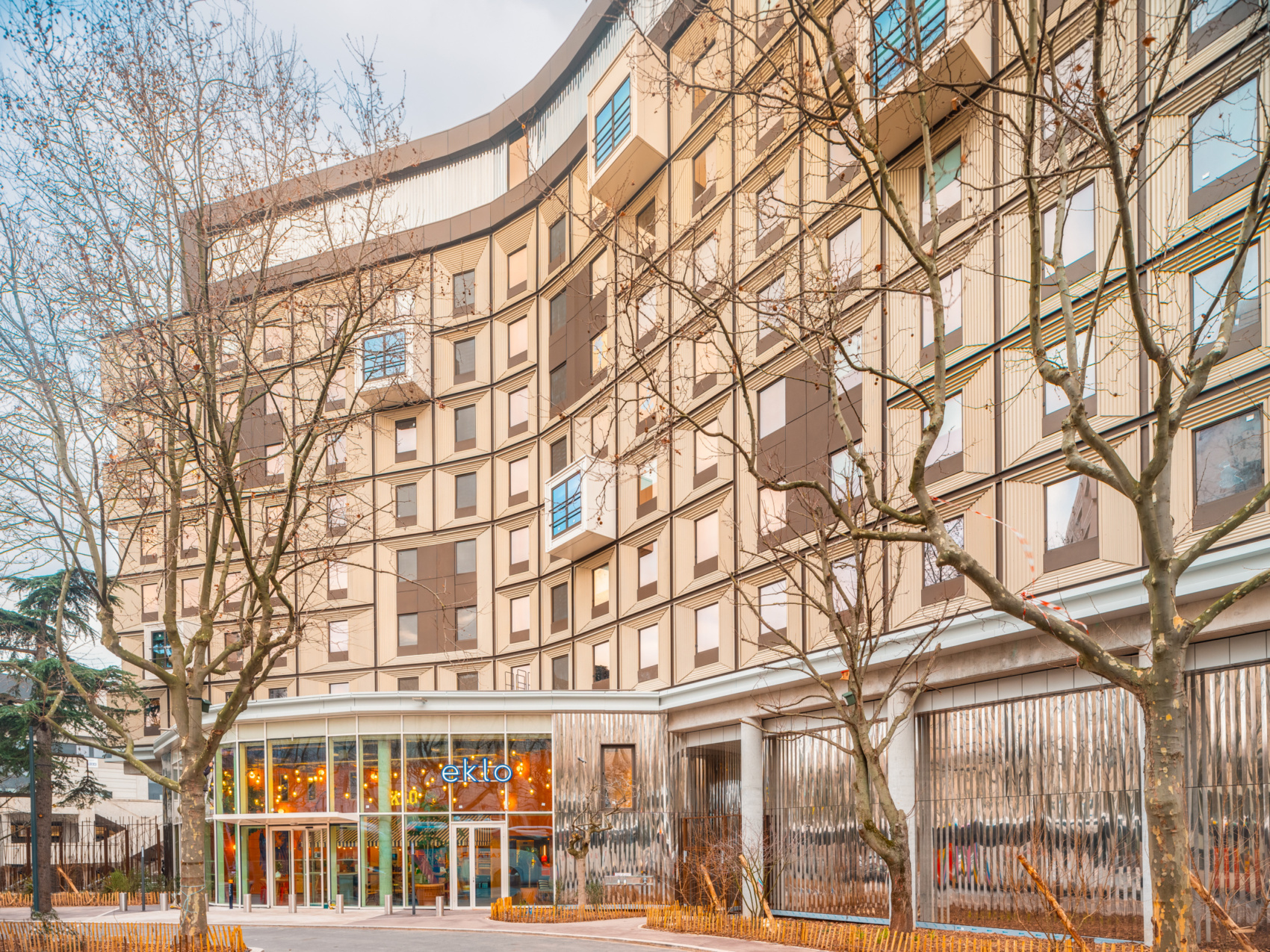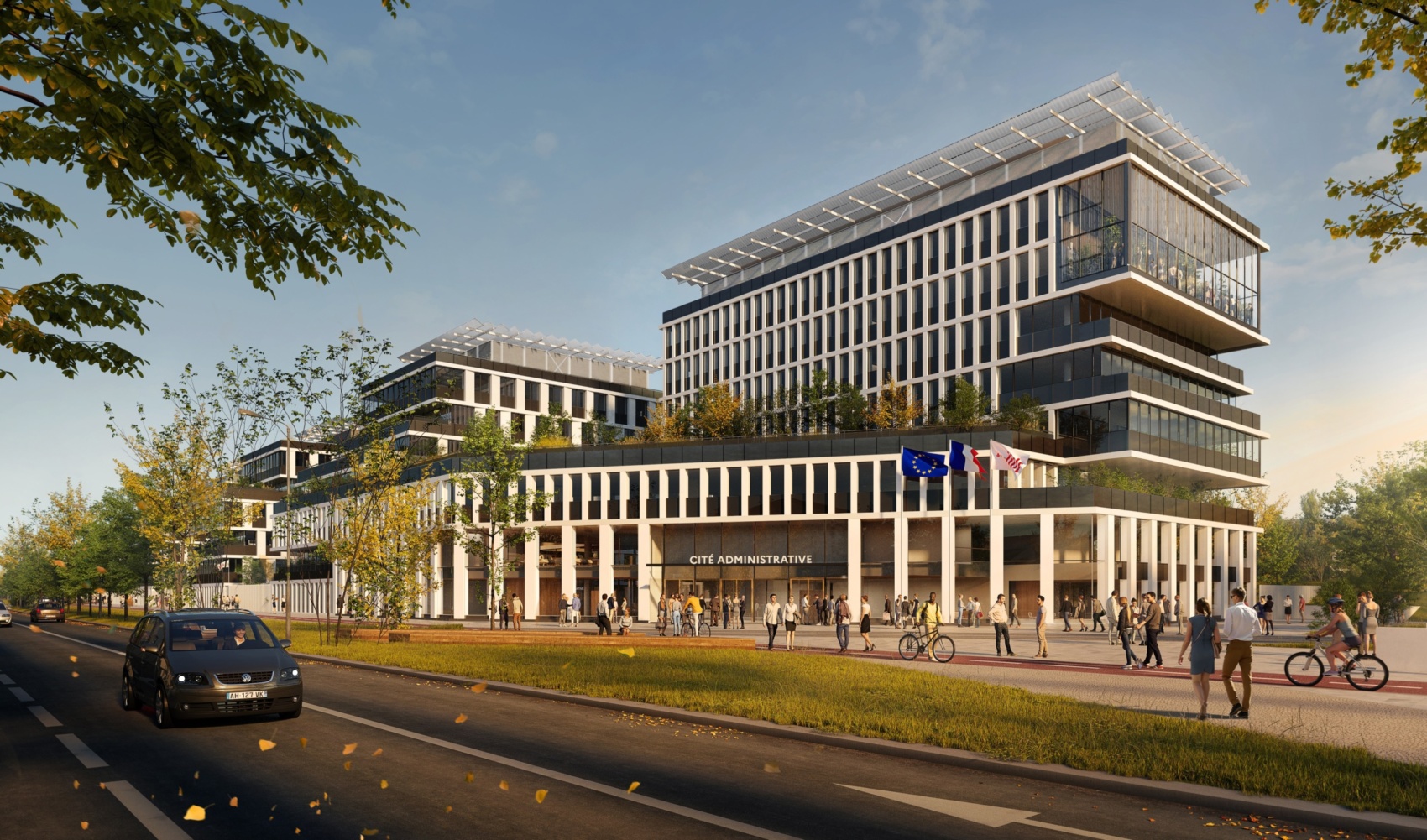
Administrative City
of Lille
The project consists of five independent, adaptable buildings based on a single design, linked by an indoor street and framed by gardens. The façade is characterised by a series of harmonious elements which vary in height and size, thus avoiding any monolithic feel. The planted external terraces extend the office spaces and provide a horizontal stratification of the buildings that reduces their scale. The ground-floor façades meet the security requirements integral to the Administrative City’s functions, as well as providing privacy for employees at street level. The various buildings are linked by the huge wooden structure that houses the indoor street. Its height and width, the latter exceeding 5 metres, make it a place filled with light and life, a place for social interaction, the very heart of the Cité, like a micro-city centre. It opens at intervals onto north-facing patios and through-running gardens. All the shared services —cafeteria, meeting and training rooms, fitness rooms, etc.— are set along the street, the project’s lively axis. Vertical circulation is kept secure and accessible from this street, giving a free-flowing feel and facilitating communication within the Cité.
The architectural choices for this project were largely determined by the project’s quest for simplicity and environmental friendliness. Façades have been handled differently according to their orientation and thus their exposure to sunlight. To the south, large shade-screens provide effective protection from sunlight during the hot season without compromising the amount of sunlight during the cold season, when the sun is lower on the horizon. The project’s planted spaces form an integral part of the architectural design, colonising all the project’s horizontal strata, whether terraces or roofs. The Administrative City is thus a place rich in plant life, with the aim of providing the best working conditions and contributing to the balance of the surrounding urban environment. On the upper part, photovoltaic panels provide additional renewable energy. These successive “attics” contribute to the project’s image and identity.
The choice of materials was governed by multiple criteria: architectural considerations, user convenience, and fitness for purpose, the idea being for each material to be used where most effective. The buildings’ concrete structure, aside from satisfying the need for robustness, provides good soundproofing between levels. Wood, a natural and welcoming-looking material, has been predominantly used for the interior facilities and the structure of the central street. The simple, streamlined interior addresses the architectural and landscaping challenges of the Administrative City project, while satisfying its ambition for an exemplary campus that serves its users.
